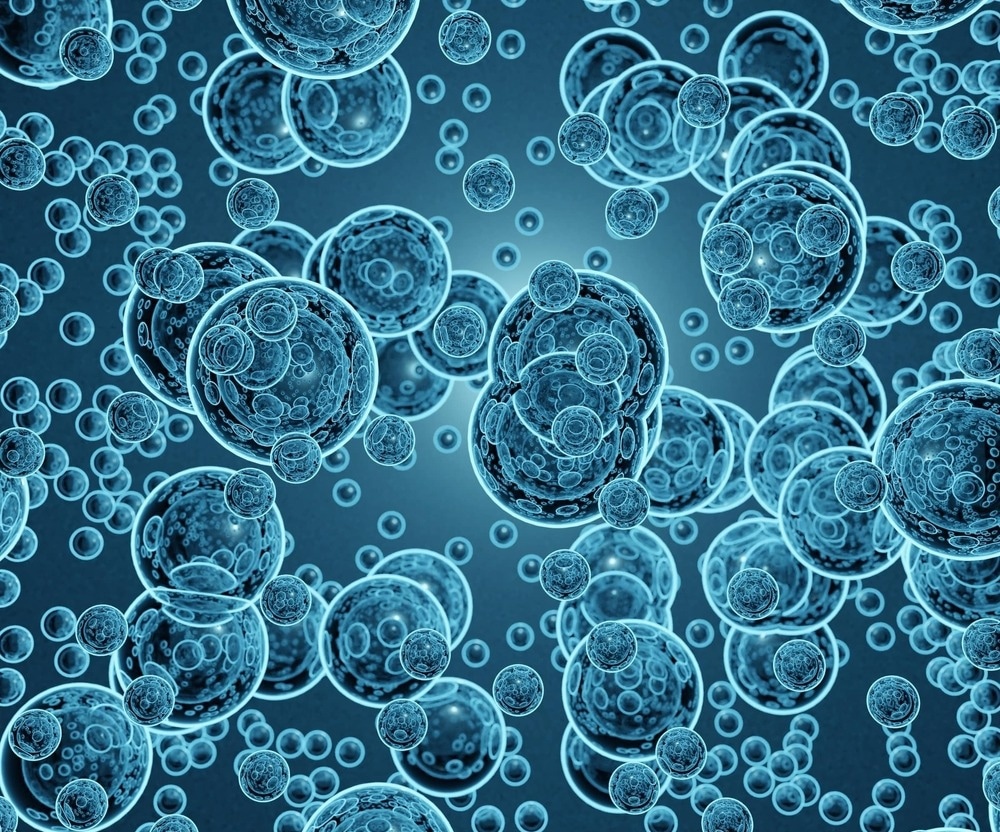Transition-metal dichalcogenides (TMDs) have emerged as a new class of semiconductors that display distinctive properties at monolayer thickness.

Study: Ultralocalized Optoelectronic Properties of Nanobubbles in 2D Semiconductors. Image Credit: Love Employee/Shutterstock.com
Although modulation of their optical properties at the nanoscale has been previously reported via electrical and mechanical nanostructuring, an illustration of the local electronic structure with corresponding emission properties is unprecedented.
An article published in the journal of Nano Letters used a combination of near-field photoluminescence (nano-PL) and scanning tunneling microscopy (STM) to probe the optical and electronic properties of nanobubbles in bilayer heterostructures of tungsten selenide (WSe2) on molybdenum selenide (MoSe2).
Here, electronic states were localized at the edge of such nanobubbles, as shown by STM. These electronic states were independent of the chemical defects in the layers. A significant change in the local band gap of the nanobubble was observed with ceaseless evolution to the edge of the bubble over a length scale of approximately 20 nanometers.
Nano-PL measurements demonstrated a steady redshift of the interlayer exciton upon entering the nanobubble, which agreed with the band-to-band transitions measured by STM. Additionally, self-consistent Schrödinger-Poisson simulations revealed that strong doping in the nanobubble region was important in achieving the localized states and mechanical strain.
Nanobubbles in TMDs
Two-dimensional (2D) TMDs are highly attractive for fundamental studies of novel physical phenomena and applications, ranging from nanoelectronics and nanophotonics to sensing and actuation at the nanoscale. Monolayered TMDs with large direct bandgaps are promising materials for optoelectronic applications, field-effect transistors, and photovoltaic cells.
The band gap in monolayered TMDs is sensitive to the dielectric environment, doping, and mechanical strain, providing an ideal platform for creating mechanical or electrical field-based quantum confinement.
Nanobubbles are created when elements trapped between the atomic layer and the substrate condense into a local pocket of pressure, which is among the most common imperfections. Although often undesired for device applications, their ability to modify the electronic structure of the atomic layer has spurred significant interest in the physics of nanobubbles.
In the case of molybdenum and tungsten families of TMDs, nanobubbles significantly alter the optical bandgap, and the energy of excitonic photoluminescence is increased by up to several hundred millielectronvolts.
Determining the magnitude and distribution of the strain within individual nanobubbles is critical for understanding their fundamental properties. This characterization is often performed by combining atomic force microscopy (AFM) to measure the topographical parameters of nanobubbles with models based on elasticity theory and treating the monolayer TMD as a thin plate subjected to a transverse load.
According to previous studies, quantum emission can co-localize with a nanobubble, and strain models developed from the continuum elastic plate theory indicate that the nanobubble's apex will have a single region of the highest strain.
Optoelectronic Properties of Nanobubbles
Although previous theoretical calculations have predicted large changes in the band gap at the edges of nanobubbles and wrinkles, such predictions were not verified experimentally. Moreover, the major contributors remained unknown, achieving localized optical emitters in TMD materials.
In the present work, the STM and local imaging techniques were used to measure the local band diagram in nanobubbles which were correlated with the measurements of near-field optics with a spatial resolution of 10 nanometers. The nearly aligned WSe2/MoSe2 hetero-bilayer stacked on a graphite/hBN electrode was used to conduct the STM measurements.
The STM topography was obtained with a constant tunneling current and at a particular voltage bias via a feedback loop. Here, the tunneling current relied on the integrated local density of states between the bias voltage and sample Fermi level.
Moreover, nanobubbles were observed between the TMD layers, formed during the stacking process via AFM imaging. The results revealed that the nanobubbles range from 20 to 400 nanometers in size and height between 2 to 50 nanometers.
Moreover, STM imaging revealed the presence of a moiré pattern both off and on the nanobubbles, indicating the contact between the MoSe2 and WSe2 layers and the existence of nanobubbles under the hetero-bilayer. Thus, fabrication at room temperature often resulted in the trapping of water molecules between these layers.
Conclusion
Overall, the local band diagram across nanobubbles was measured using local imaging and STM, and the results of the measurements were correlated with ten nanometer-resolution near-field optical measurements.
Nearly aligned WSe2/MoSe2 hetero bilayers were placed on a graphite/hBN conducting electrode for the STM measurements. Here, the relative orientation of two TMD monolayers was established via second harmonic generation (SHG). The nanobubbles were created during the stacking process in the spaces between the layers.
The nanobubbles' sizes of 20 and 400 nanometers and heights of 2 to 50 nanometers were confirmed from AFM images. The findings suggest that light emitters with arbitrarily desired forms can be made at the nanoscale by combining interfacial engineering with nanostructuring.
Reference
Shabani, S et al. (2022). Ultralocalized Optoelectronic Properties of Nanobubbles in 2D Semiconductors. Nano Letters. https://doi.org/10.1021/acs.nanolett.2c02265
Disclaimer: The views expressed here are those of the author expressed in their private capacity and do not necessarily represent the views of AZoM.com Limited T/A AZoNetwork the owner and operator of this website. This disclaimer forms part of the Terms and conditions of use of this website.